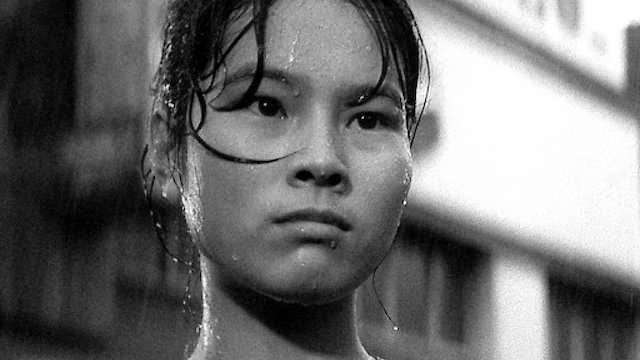
Pigs and Battleships
Where to Watch Pigs and Battleships

Pigs and Battleships is a seminal work of Japanese New Wave cinema, directed by the innovative and influential filmmaker Shohei Imamura and first released in 1961. This film stands out not only for its unflinching critique of post-war Japanese society but also for its bold aesthetic choices that starkly deviate from the conventions of mainstream filmmaking at the time. The film's central performances are spearheaded by Hiroyuki Nagato and Jitsuko Yoshimura, with a significant role played by Masao Mishima. Together, they bring to life a gritty and multi-faceted exploration of the human condition within a rapidly transforming nation.
Set against the backdrop of the bustling port town of Yokosuka, which is dominated by the presence of a U.S. naval base, Pigs and Battleships delves into the lives of the town's impoverished inhabitants who are struggling to find their footing amid the cultural and economic changes that the American occupation has brought. The base's influence permeates the entire community, affecting everything from business operations to individual relationships and personal ambitions.
Hiroyuki Nagato stars as Kinta, an ambitious but naive young man who becomes entangled in the dodgy enterprises that proliferate in Yokosuka as a result of its unique position. He works for a piggery that is a front for a more sinister business run by the local Yakuza—a Japanese crime syndicate. The pigs Kinta tends to are symbolically fed with the discarded food from the American base, a metaphor for the relationship between the occupied and the occupiers.
Jitsuko Yoshimura plays Haruko, a young woman deeply in love with Kinta but who finds herself isolated by his involvement with the Yakuza and the moral compromises he makes in pursuit of a better life. Haruko represents the traditional moral compass of the story, yearning for a simpler, more honest existence, and her relationship with Kinta is one filled with both tenderness and tension, emblematic of the push-pull dynamic between old Japan and the new order.
Masao Mishima's character is depicted with a measure of nuance, representing an older generation trying to maintain status and control in a rapidly changing society. His choices and motivations are reflective of the corrupting influence of power and the tenuous grasp on authority that such individuals might feel in the face of towering foreign influence.
Pigs and Battleships is a raw and unapologetic portrayal of a society on the brink of transformation. The film articulates a national identity crisis through several narrative threads, expertly woven together to offer a comprehensive picture of Japan at a pivotal moment in its history. Imamura exposes the inequities and corruption at the heart of the relationship between the U.S. military personnel and the Japanese locals, crafting a sardonic and sometimes grotesque commentary on the symbiotic yet parasitic bond between the two cultures.
Visually, the film adopts a gritty, near-documentary style with an emphasis on dynamic, handheld camerawork, which pulls viewers into the bustling streets and shady establishments of Yokosuka. This creates an immersive and sometimes claustrophobic experience, capturing the frenetic energy and palpable stress experienced by the characters. The camera often lingers on the faces of the townspeople, rendering their often-stoic expressions as a canvas upon which the strain of their daily lives is subtly portrayed.
The narrative is punctuated by moments of dark humor, which serve to alleviate the tension and offer a satirical look at the absurdities inherent in the cultural mishmash of post-war Japan. These comedic instances do not detract from the film's serious concerns but instead provide an additional layer of complexity to the emotional tapestry of the story.
The film's provocative title, Pigs and Battleships, encapsulates the central themes of greed, consumption, and exploitation—both literally, in the context of the storyline around the pig farming operation, and metaphorically, in terms of the commodification of Japanese dignity and sovereignty. These themes resonate throughout the plot, reaching a crescendo in an ending that delivers a powerful statement about the direction Japan must choose to move forward as a nation.
As a whole, Pigs and Battleships is a multifaceted and compelling piece of cinema that offers a glimpse into a specific historical moment while also speaking to universal themes of identity, survival, and the human capacity for resilience. Its lasting impact is not only rooted in its socio-political commentary but also in the fact that it represents a cinematic style and approach that was ahead of its time.
Pigs and Battleships is a Crime, Drama movie released in 1961. It has a runtime of 108 min Critics and viewers have rated it moderate reviews, with an IMDb score of 7.4..
